Just drive off, right into the somewhere. We get into the car and set course north. We want to go to Poland, a country we last visited many years ago. What adventures are waiting there? Today we walk up to the fantastic Sahara of Poland, the Slowinsk National Park, a place whos never the same after a while.
You can read the first part here, second here, 3 here and 4 here
There is still quite a bit to walk from the place where the small electric bus stops and everyone has to get off. We are near the Łącka Dune on the Polish Baltic coast, one of the great natural wonders of old Europe, a mystery even to science. But there is nothing to see here in the Slowinsk National Park (in Polish: Slowinski Park Narodowy).
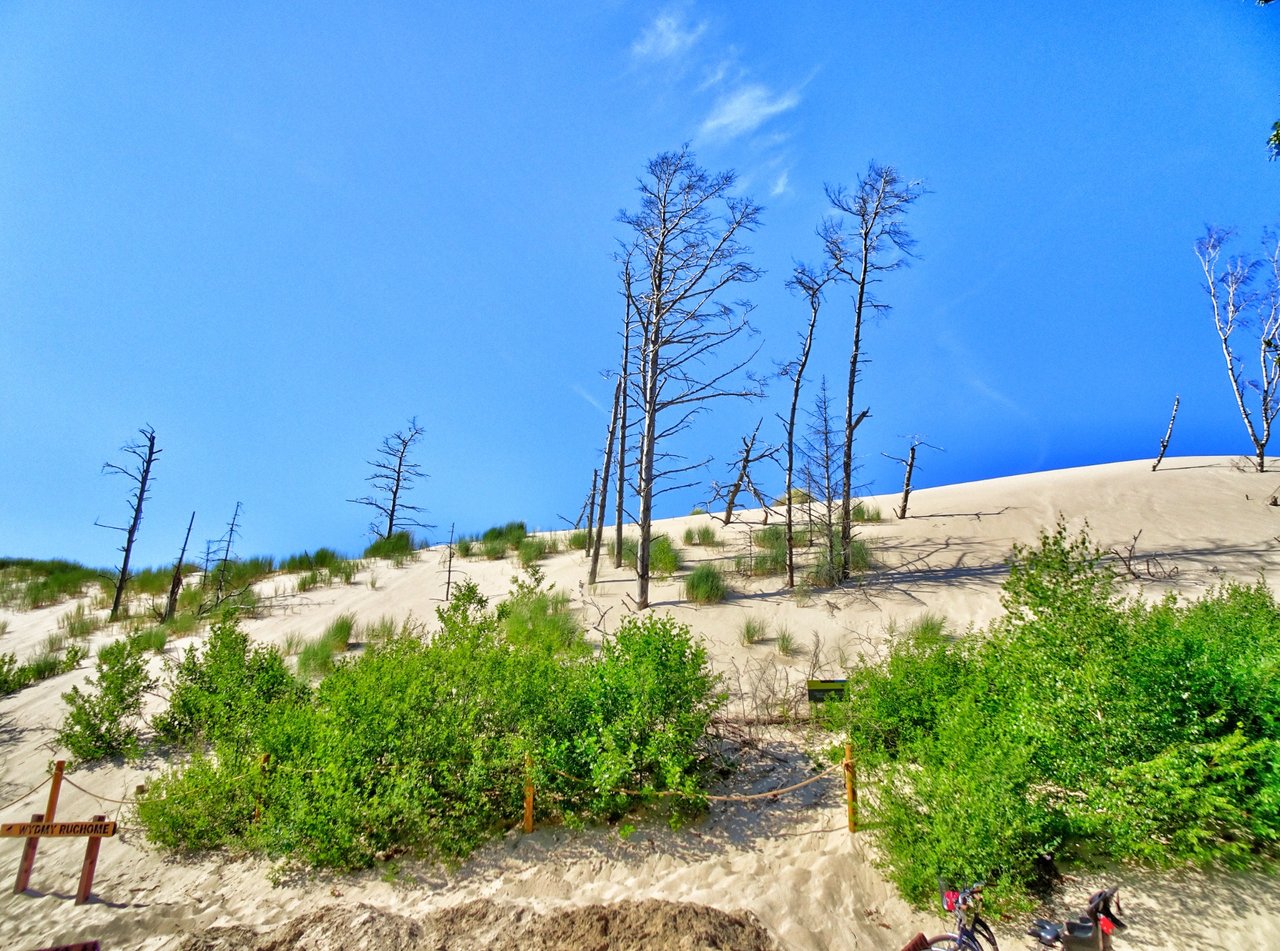 Looks like a little bit of sand
Looks like a little bit of sand
Only forest all around, trees and marshy ground next to the wide path on which an endless column of curious people wanders to the west. No wonder, perhaps the most famous national park in Poland is 18,618 hectares in size and from the terminal stop of the electric buses it is still more than four kilometers to the place where the view opens onto an amazing landscape.
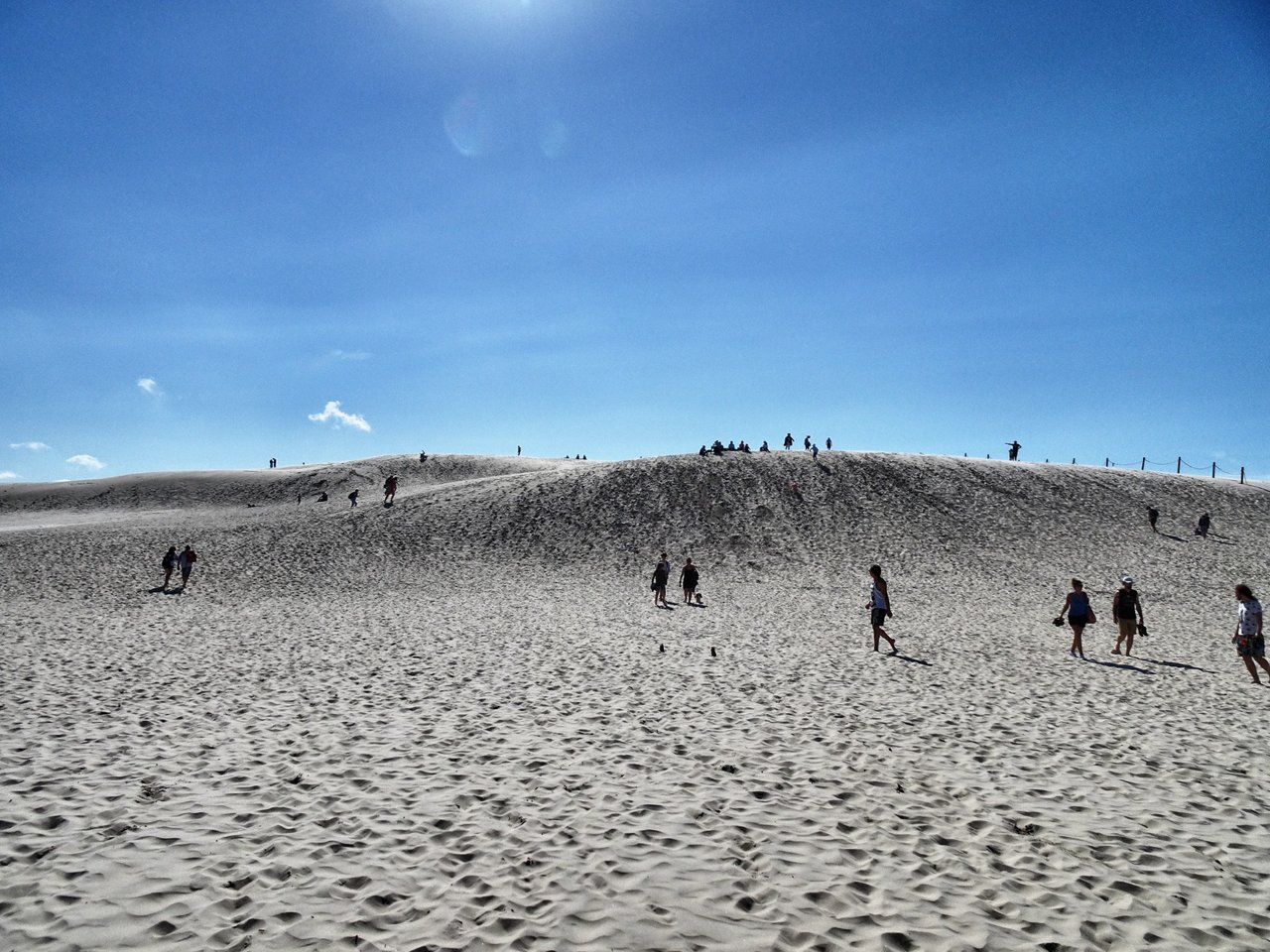 But the mountains are huge
But the mountains are huge
Always in motion
Snow-white sand piles up into mountains, enormous heaps that are always in motion. The wind carves grooves into the dunes, creating ripples and break-off edges, pushing the sand further east each year. The huge dune landscape in the middle of Europe is unique and so impressive that it has been nicknamed the Polish Sahara.
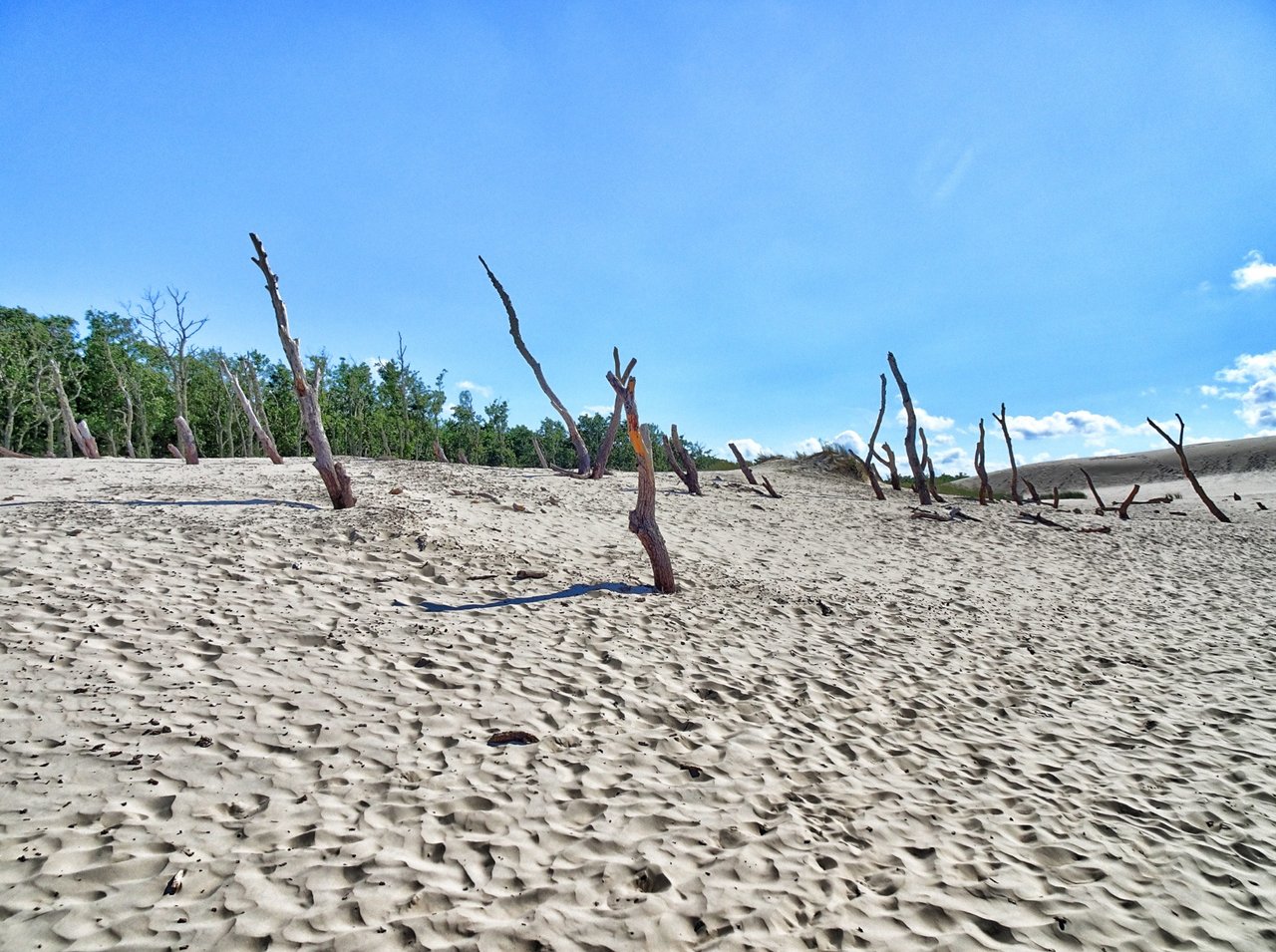 The sand eats the trees
The sand eats the trees
The highest dune is up to 42 meters high, the fine sand moves a full twelve meters further each year, and the section that tourists are allowed to enter and climb is only a tiny section of the entire work of art that Mother Nature has conjured up here. The coastal landscape and dunes have been a UNESCO biosphere reserve since 1977.
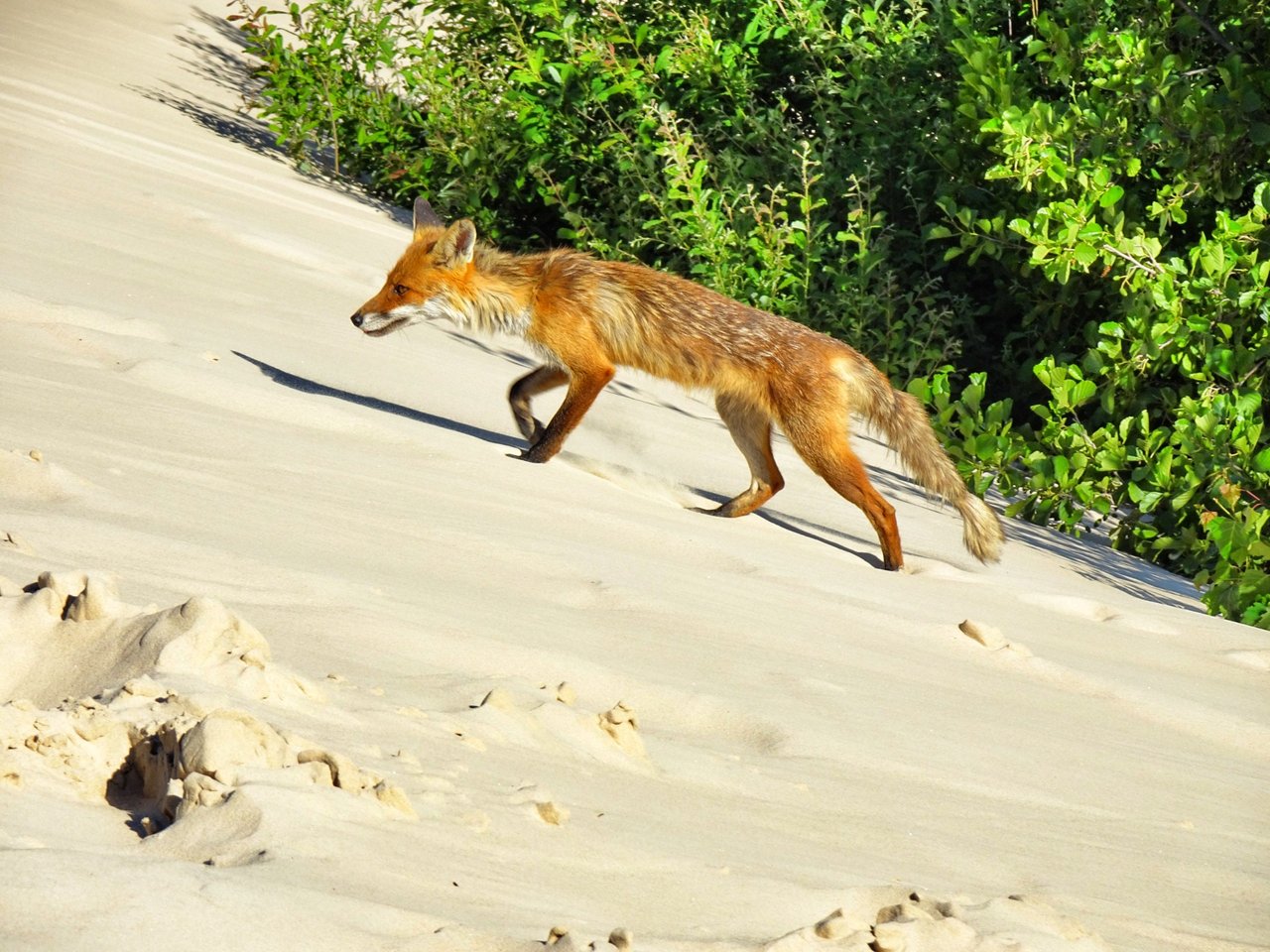 This lovely fox crossed our way
This lovely fox crossed our way
The highest dune is up to 42 meters high, the fine sand moves a full twelve meters further each year, and the section that tourists are allowed to enter and climb is only a tiny section of the entire work of art that Mother Nature has conjured up here. The coastal landscape and dunes have been a UNESCO biosphere reserve since 1977. In the past, these moving sands covered up the village called Łączka. The remembrance of this occurrence has been preserved in the name of the largest moving dune of the Slovinski National Park The Łącka Dune.
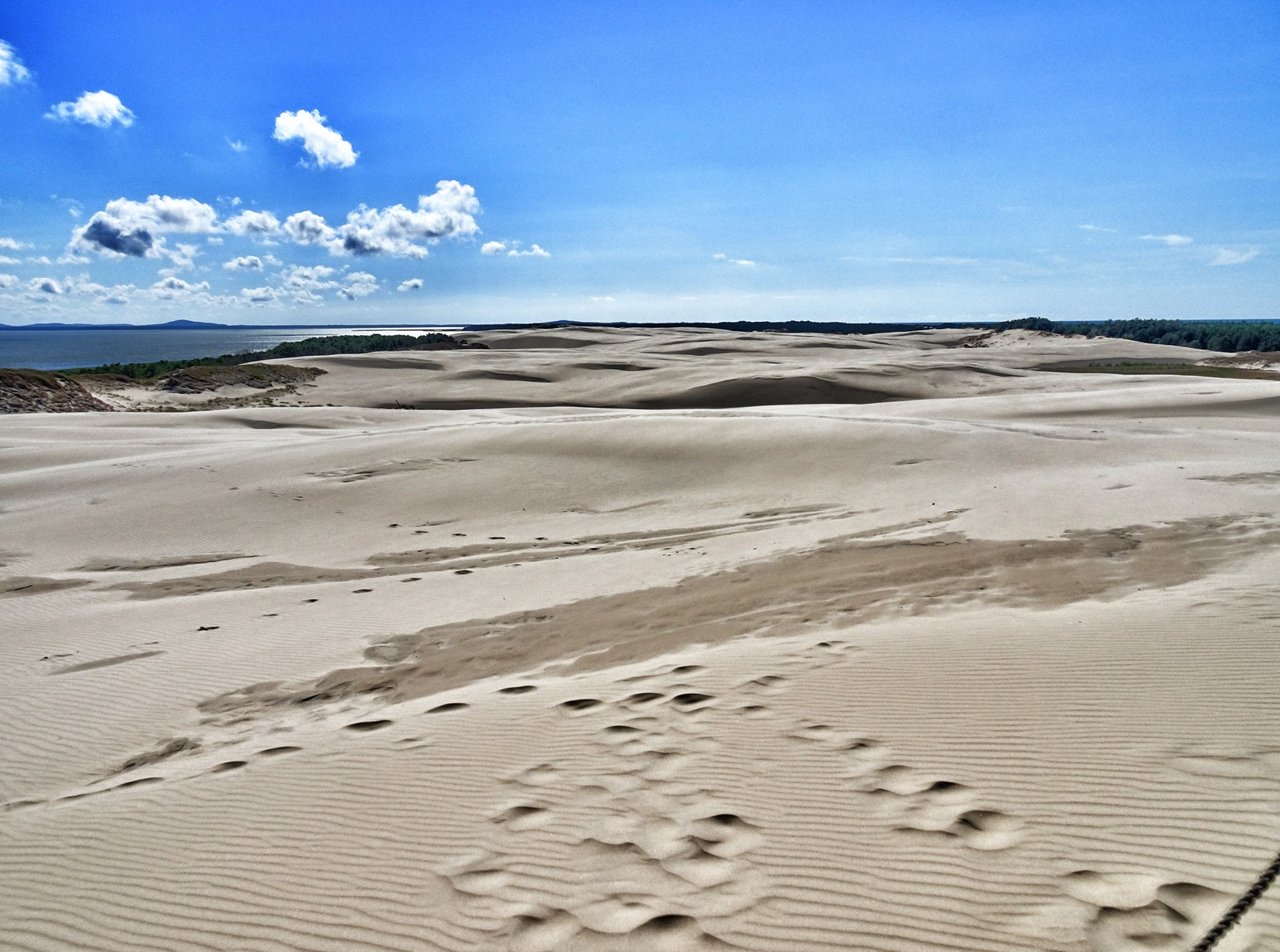 the view to the sea
the view to the sea
Made by westen winds
It has the shape of a large crescent with the rays outstretching eastwards. The dune translocates to the east due to predominating western winds. Its windward slope (western) is long and calm, whereas the leeward slope (eastern) is steep and short. With the wind blowing with the speed of 5 M/S (18 KM/H) there starts the movement of the dune. The sand corns being rolled by the wind wonder eastwards until they reach leeward slope when they impetuously scree down. In this manner, the dune moves, translocat ing several metres per year. In this time the dune covers every thing up that it meets on its route.
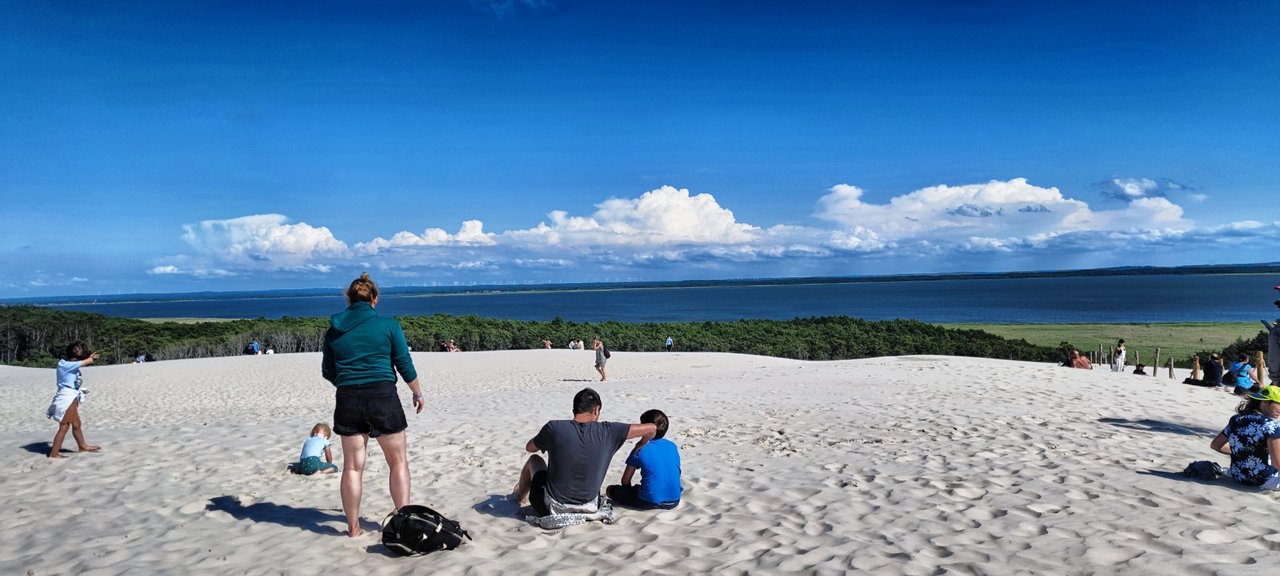 A bunch of people are on the dunes
A bunch of people are on the dunes
Having reached the Łącka Mountain, one can see that its southern part covers up the alder forest. The height of its most wide-spread moving dune depends on the strength of blowing winds and ranges between 30 and 42 meters over the sea level. During the spring and summer, when the winds are lighter, it moves more slowly but it grows in height. During the autumn and winter when strong storm-winds blow, it moves more rap idly though it is lower.
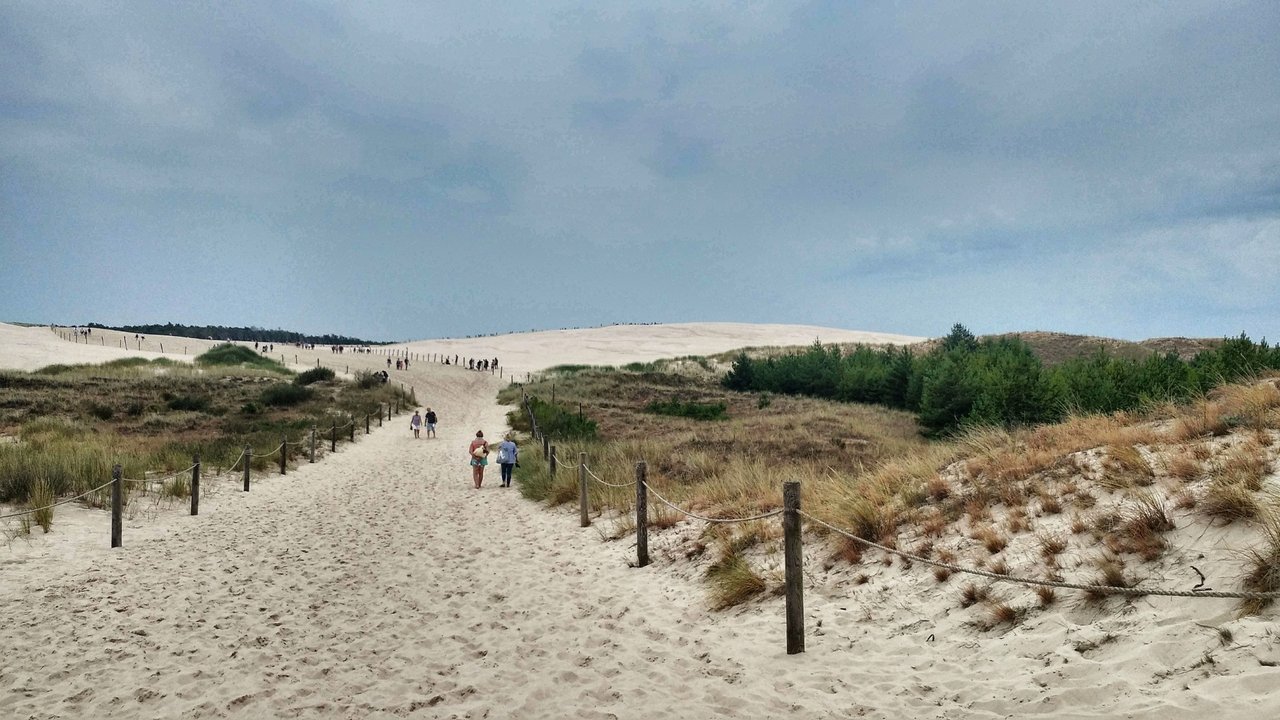 This is the highway to the dunes
This is the highway to the dunes
Dune Dusting
While wondering, one can notice the phenomenon of Dune Dusting" meaning the sound caused by the sand rushing with the wind. The Łącka dune constitutes a part of over 500 HA com plex of moving dunes. This range, called the White Mountains by the name of he sand that forms it, is unique in the European scale.
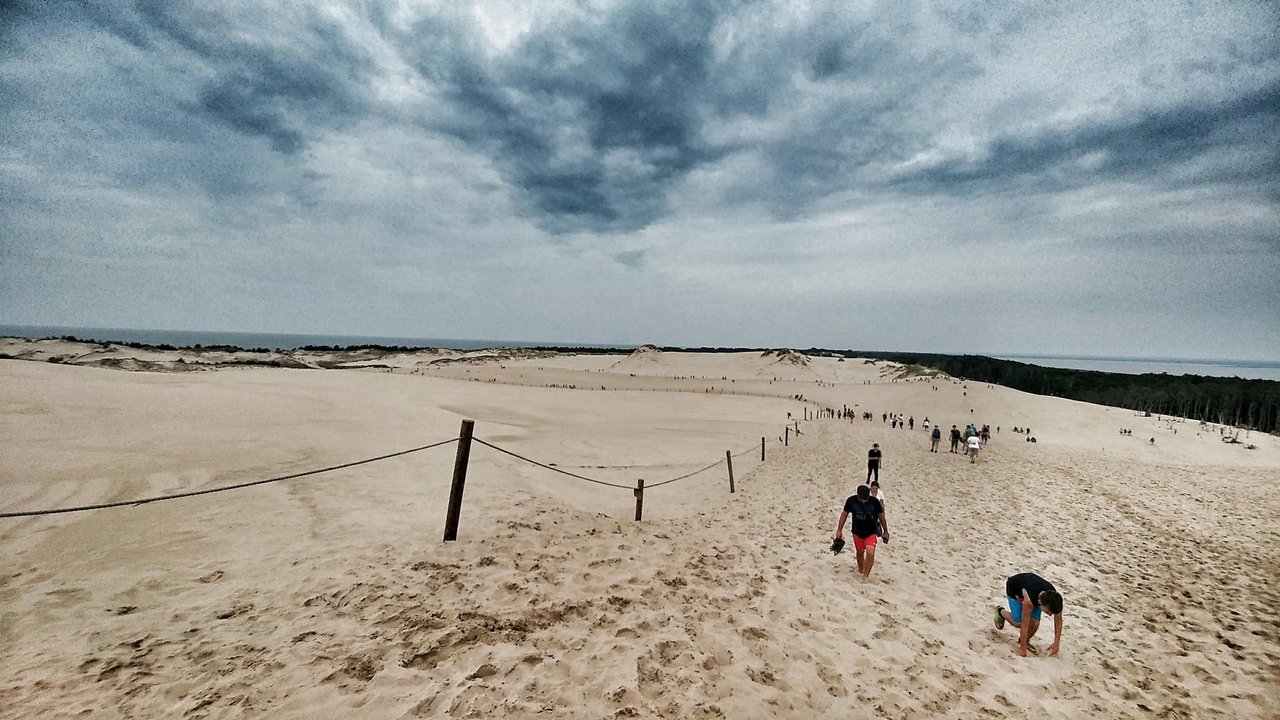 You have to climb a little bit
You have to climb a little bit
The dunes are not only the sand but also they constitute plants and animals living there. Due to dry, barren and moving solum, life in these conditions is not easy at all. Such difficult conditions endure not many species of plants.
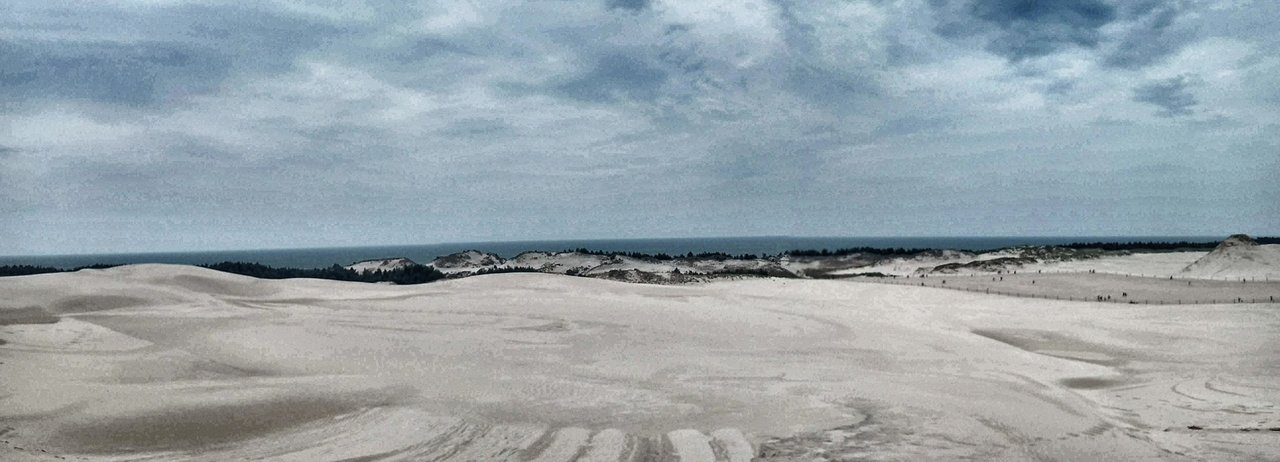 The sand moves every day
The sand moves every day
The pioneer among them is beach grass (Ammophila) the grass, which stabilizes the dune by its long roots and facilitates better conditions for other, not-numer ous plants. Not large plants diversity influences small diversity regarding the animal world. On the Mov ing Dunes, none of the birds make their nestles there. The only birds that can be noticed are the ones that only fly in form the neighbouring forests, beaches and the hollows between the dunes.
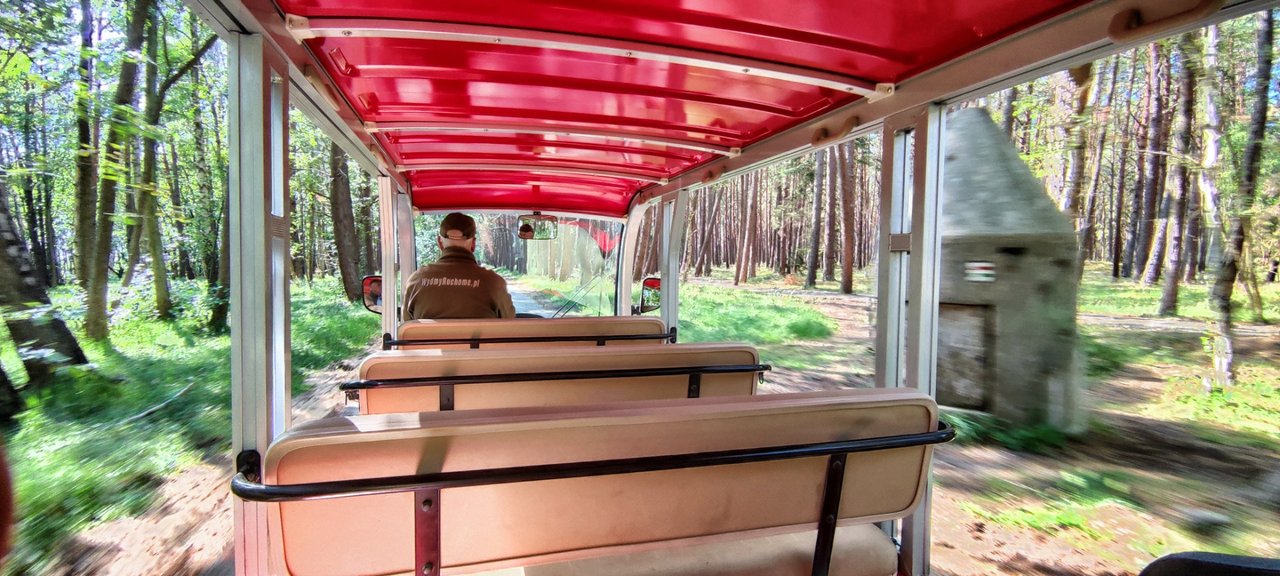 And the guy in the E-bus moves too - on the right side: an very old bunker
And the guy in the E-bus moves too - on the right side: an very old bunker
With a little bit of luck, one can meet deer, roe-deer or wild boars for which the dunes make only the stage in their won der and not the place of a permanent staying. Many a time, from the peak of the Łącka, one can observe a flight of white-talled eagle the bird strictly connected with water environment. The Łebsko Lake is the spot, where the white-talled eagle gains its food and it has built a nestle in the nearest forest on the Spit.
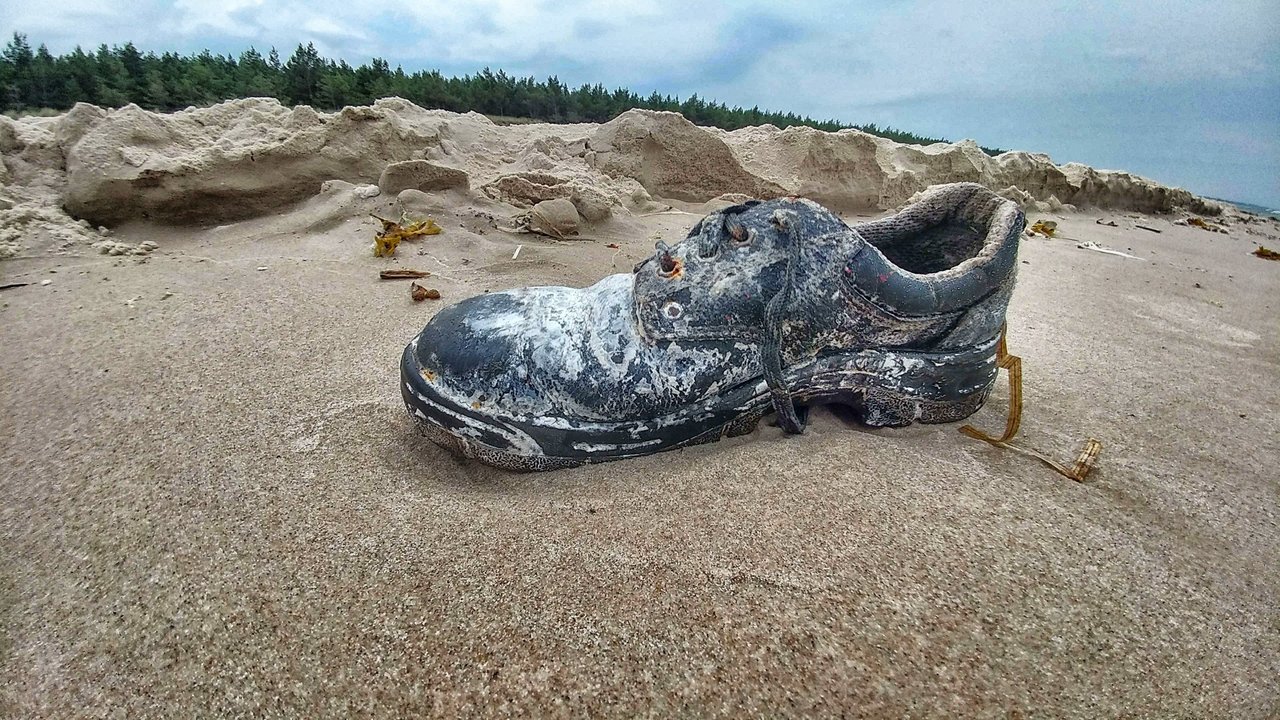 Someone lost this
Someone lost this
Sun is burning
When the sun is burning, it is a real challenge to climb up through fine, deep sand to the top of the sand mountains that lie directly on the shore of the Baltic Sea. If the Polish Baltic coast is already a wonderful landscape offering unique natural experiences, this one piece of place is a highlight for the eye and the senses.
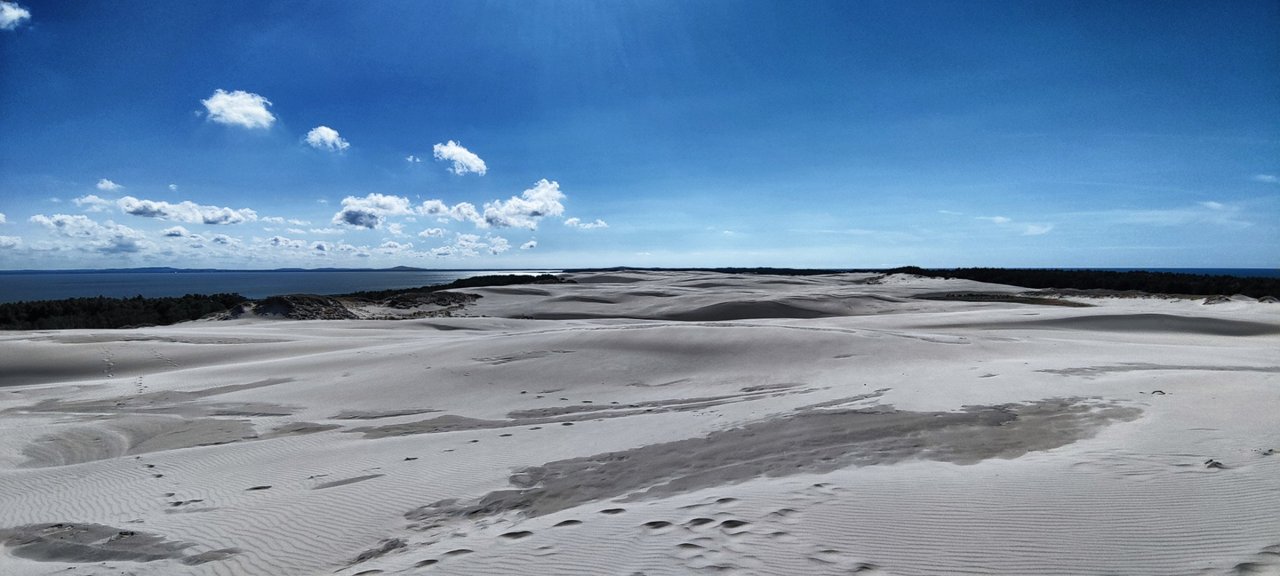 More san, more sea
More san, more sea
From above, the view widens, now the whole dimension of the desert by the sea can be imagined. On the left is the sea, on the right a small bodden, in front of us the forest and behind us: sand, only sand, endless.
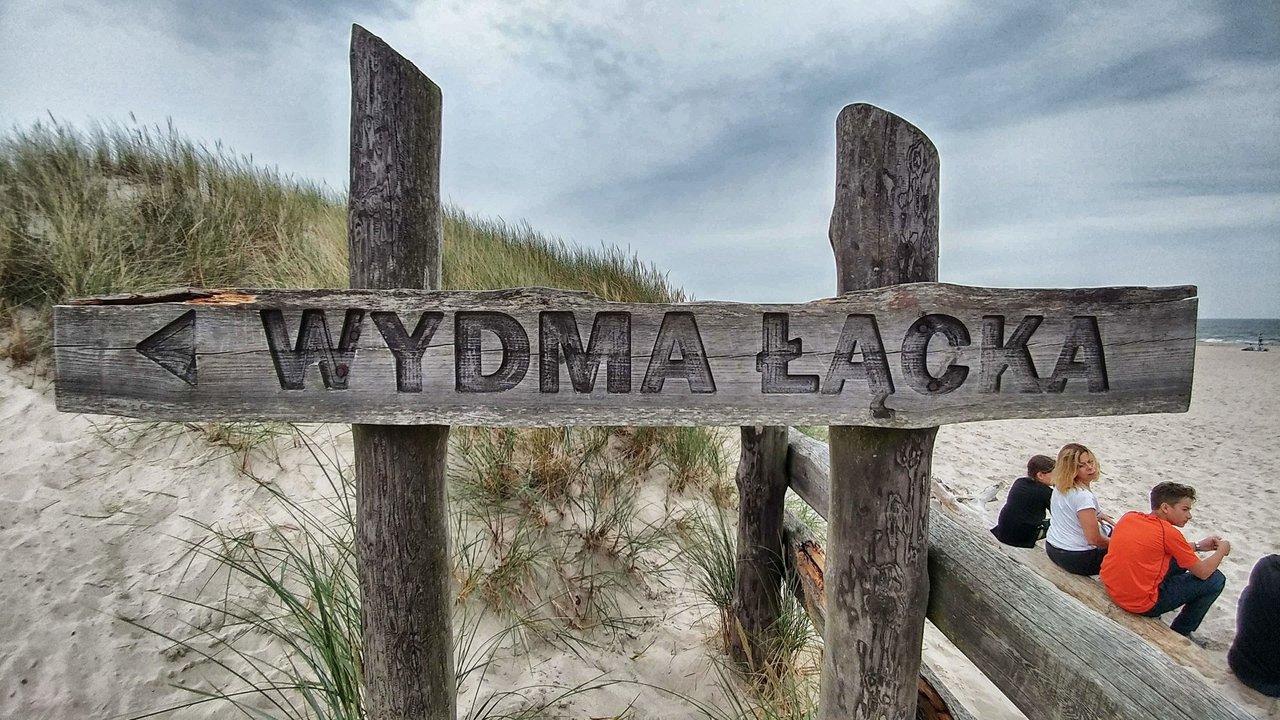 You can walk along the beach to the dunes
You can walk along the beach to the dunes
Leba, the next town, is considered - in the style of the Sahara picture - as the "Polish Africa". 3,500 inhabitants and 40,000 official guests per year, and all of them want to get to the dunes at some point. They are pure nature, but not quite: It was only when the Slavs cut down the oak forests on the coast here in the early Middle Ages that the sand from the sea beach accumulated due to the wind and piled up over time to form huge dunes.
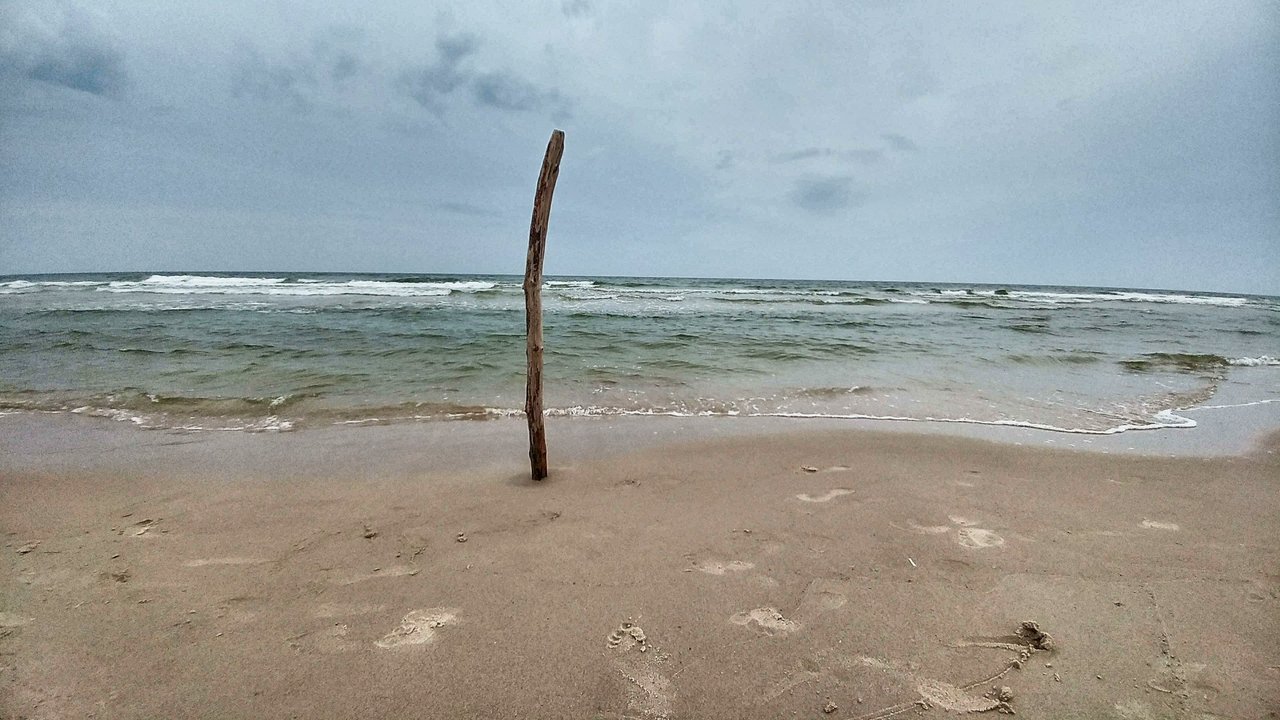 The sea is very beautiful here in Poland
The sea is very beautiful here in Poland
Dunes of Africa
Slowly it moved inland. The grainy mass still eats its way forward about ten meters a year. One can experience firsthand how the sand buries and suffocates the trees. The withered uppermost branches of the trees protrude from the dune crown like small bushes. A short distance from here, one can explore one of the German wartime rocket forges as a museum. Here, too, dusty sand slowly covers the concrete ruins.
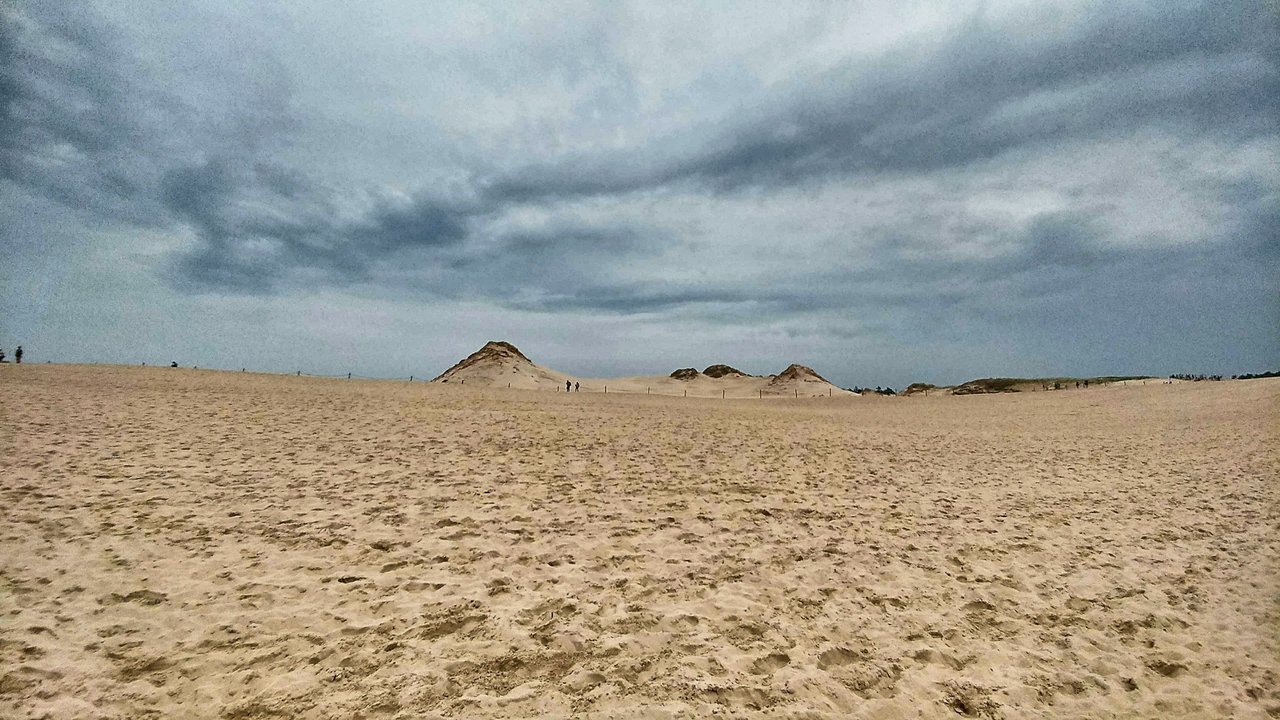 Endless views over the sand
Endless views over the sand
Nature reclaims everything and what does not belong to her, she takes. A fox accompanies our way up, away from a bicycle parking station whose operators look sad because hardly any of the arriving cyclists want to use their services.
Never the same place
Poland, once disreputable as a country where nothing is really really safe, has transformed in this respect as well. You could forget your expensive smartphone on a bar table and find it in the same place the next day - if a friendly table neighbor didn't immediately run after you and press it into your hand.
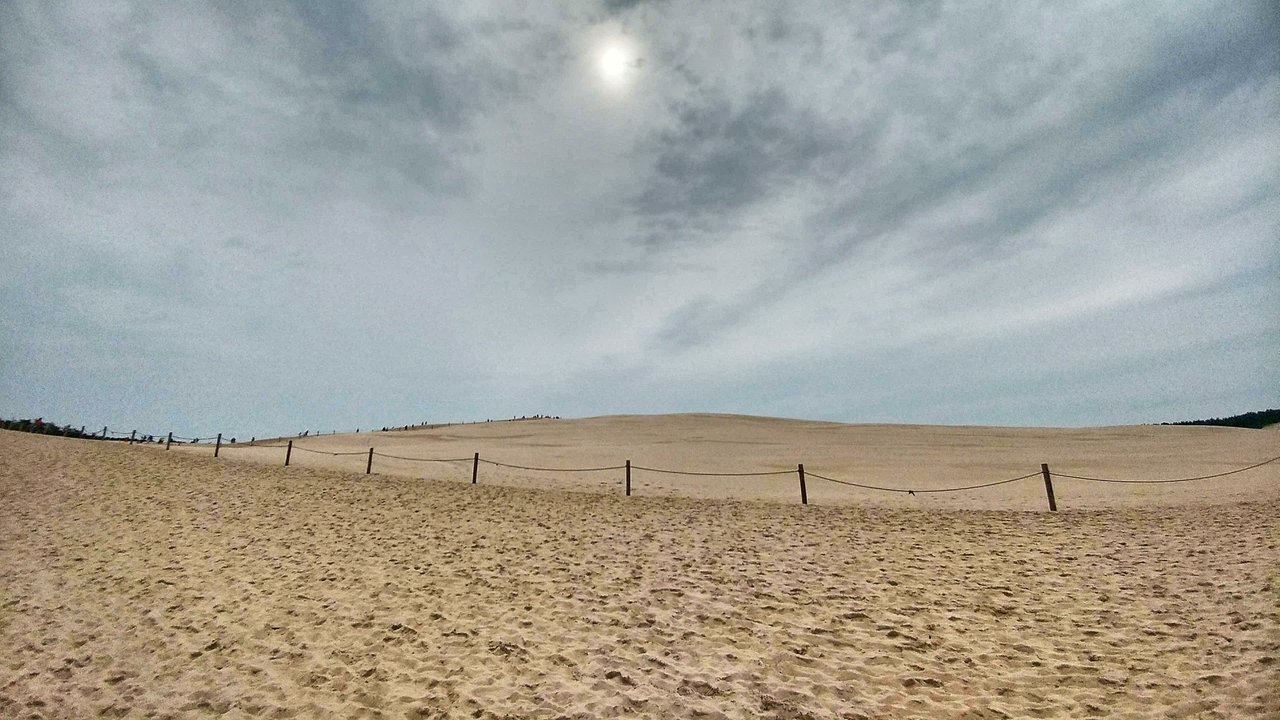 Forbidden areas behind the line
Forbidden areas behind the line
The sky is piercingly blue, the forest green and the sun glistening, while whole groups of visitors try to take selfies at the top of the dune, showing themselves and as much of the snow-white sandy landscape as possible. The accessible area is full of people from all over the world on particularly busy days, only towards evening it becomes quieter, the dune empties and the scenery turns into a canvas on which the setting sun paints the most amazing colors.
Thank you for reading and if you like my work please follow me on Hive, Travelfeed or Steem or visit my homepage koenau.de
A few more pictures for you:
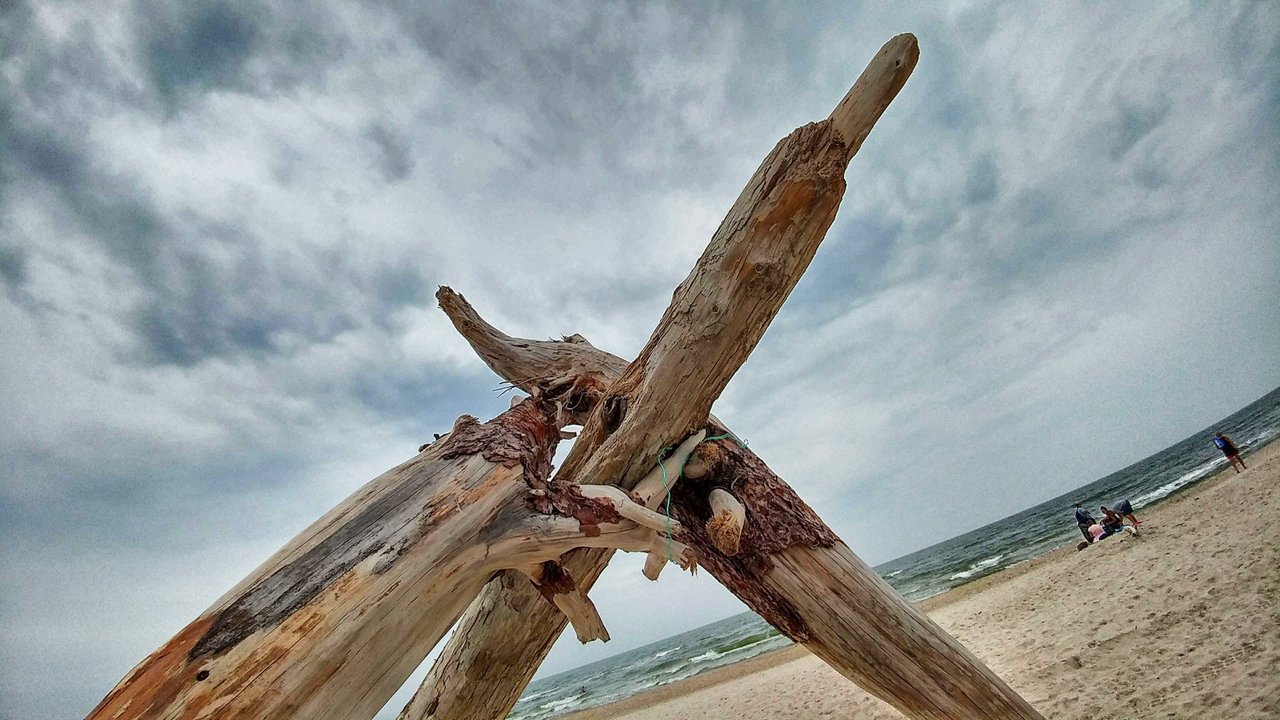 Wooden signs
Wooden signs
 360° view
360° view
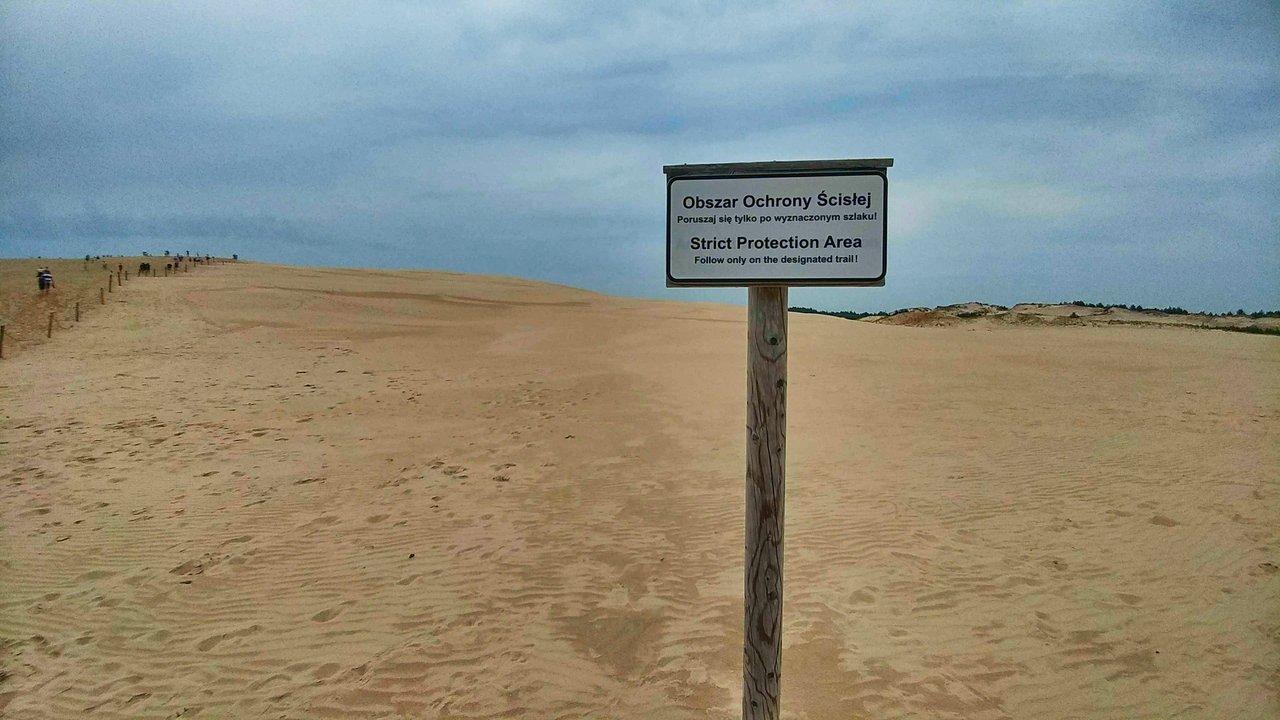 Please do not step
Please do not step
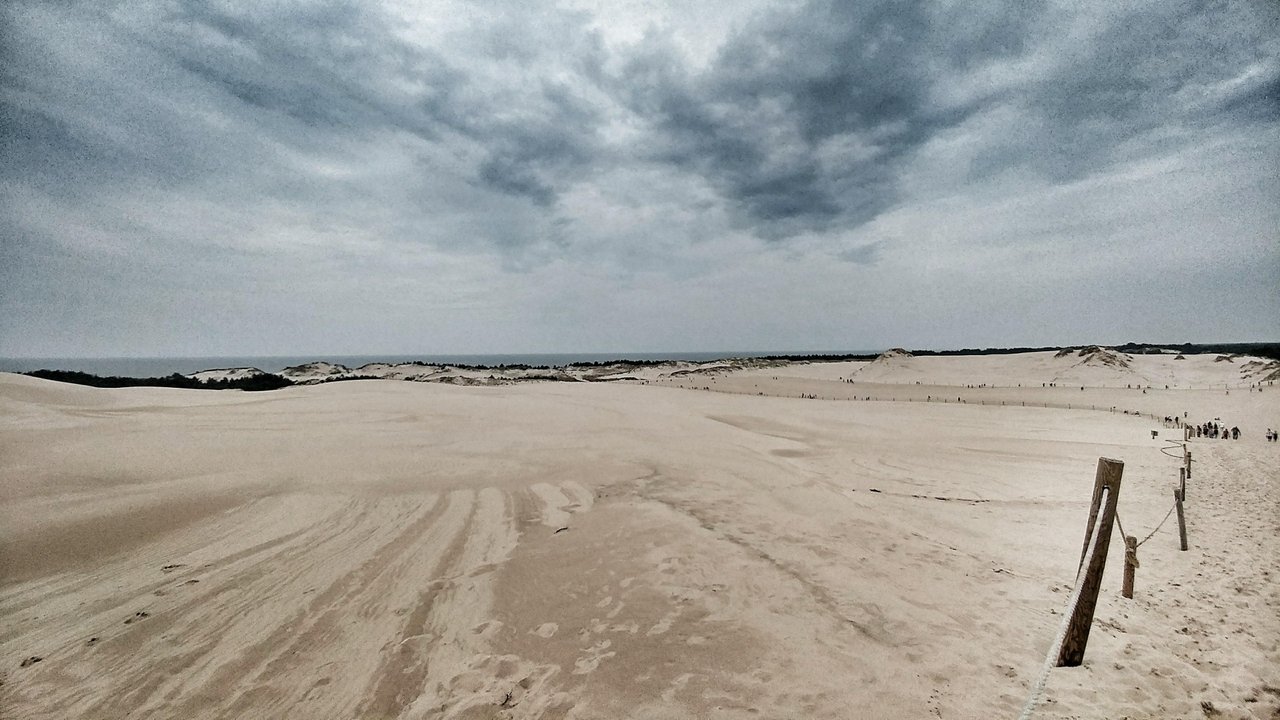 Under the clouds
Under the clouds
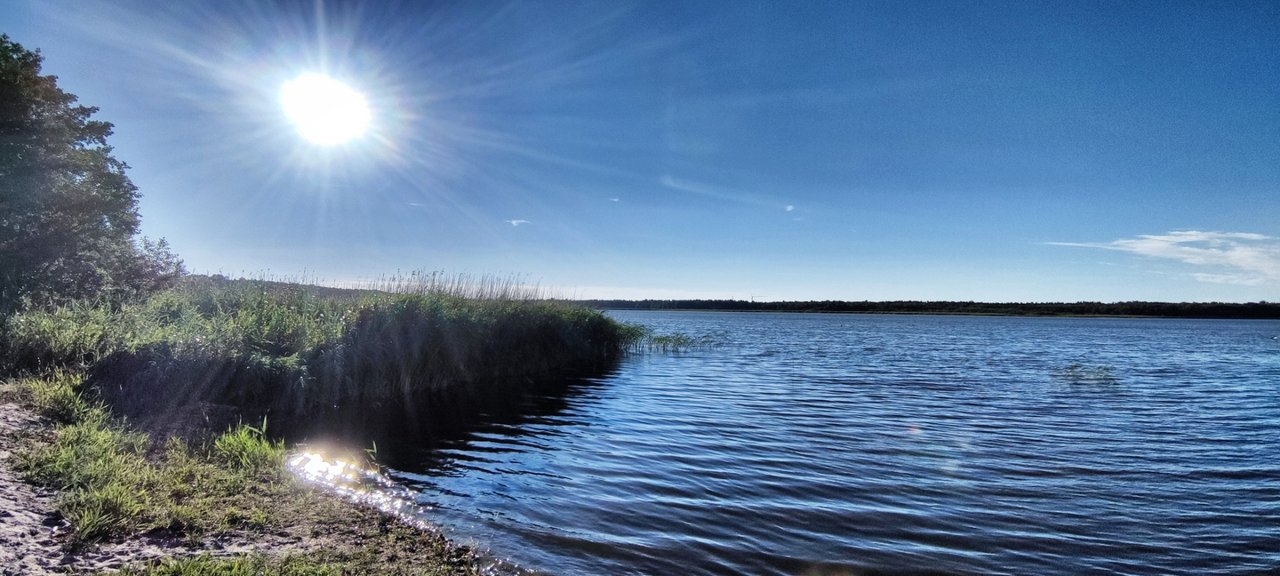 a few kilometres away: Nice water
a few kilometres away: Nice water
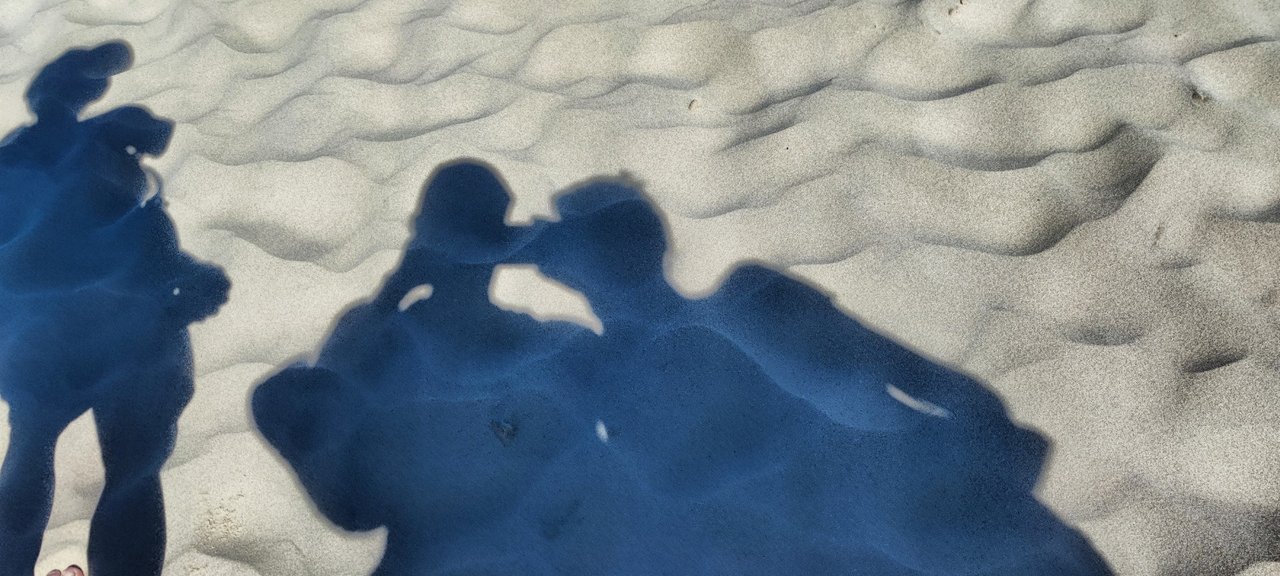 Us on the dunes
Us on the dunes
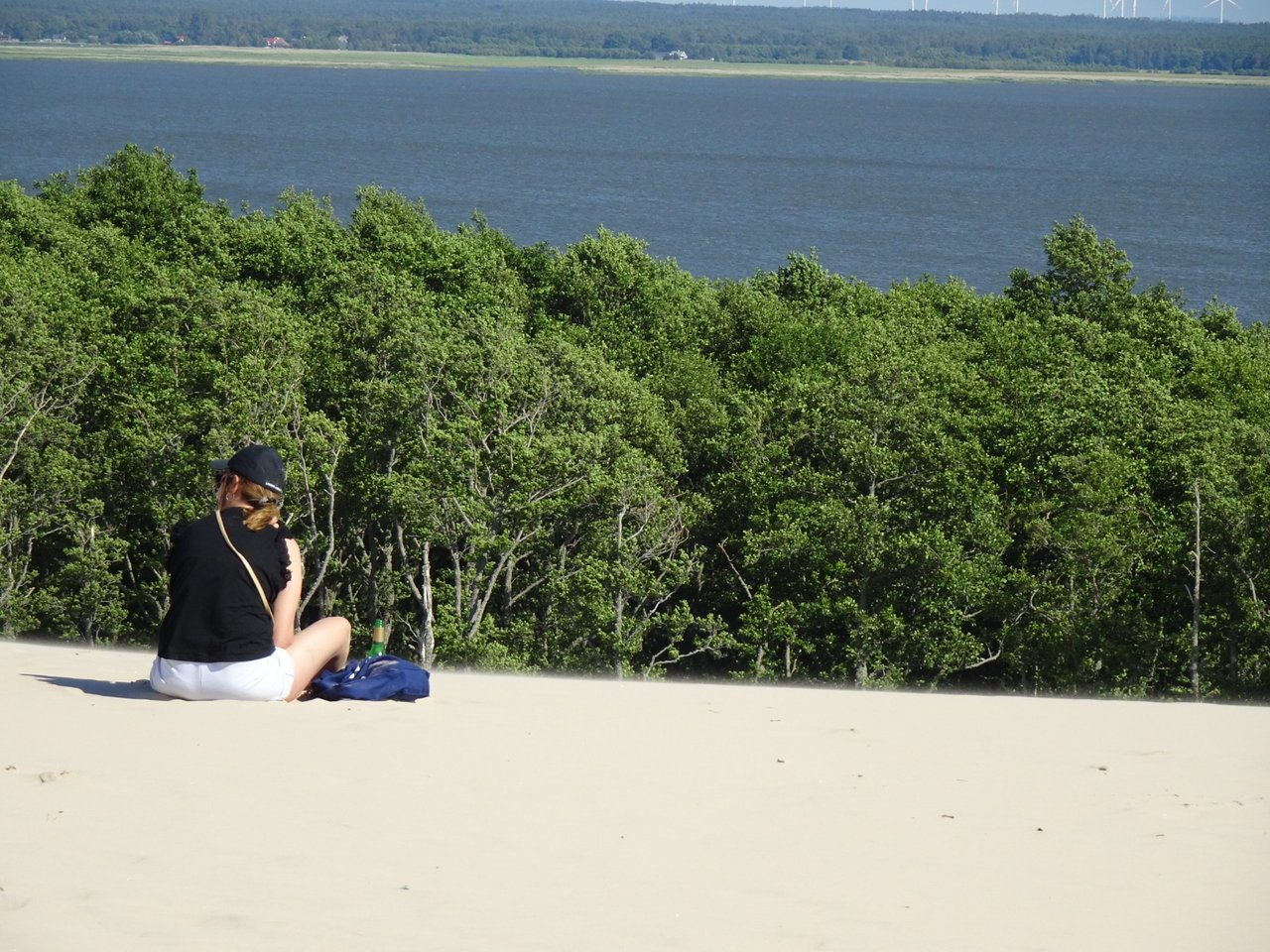 A girl is looking from the mountain made of sand
A girl is looking from the mountain made of sand
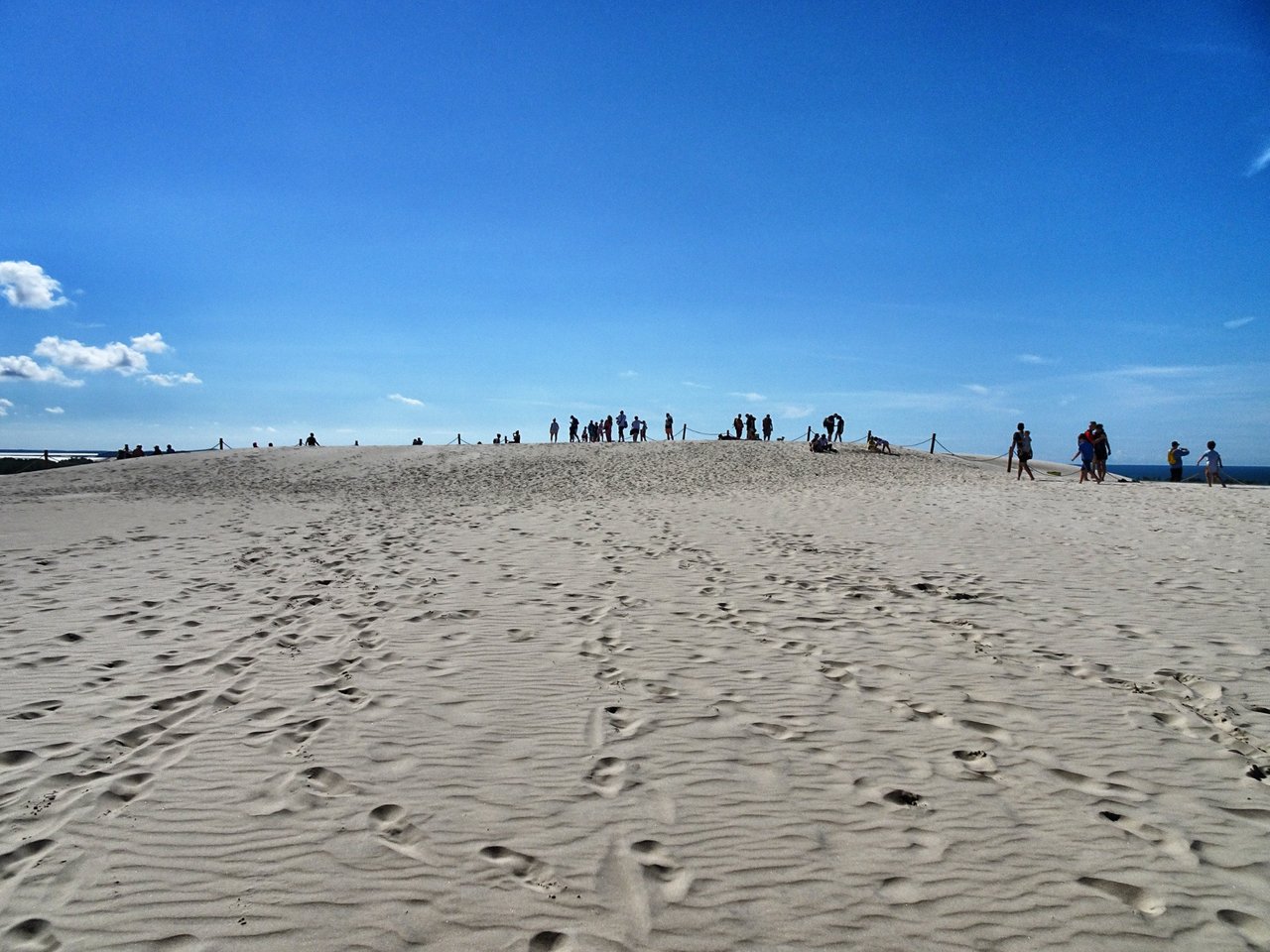 Me, looking up to the peak
Me, looking up to the peak
 One of the eagles
One of the eagles
